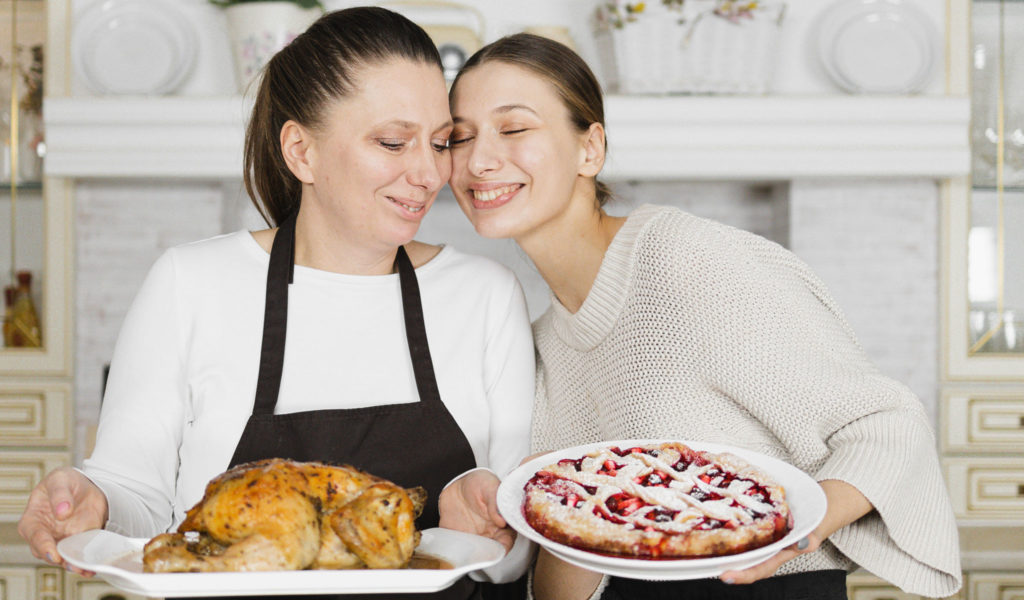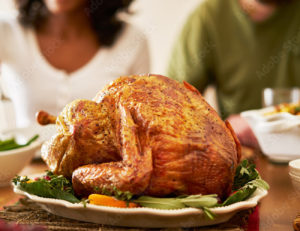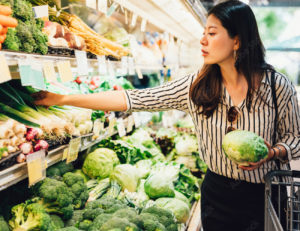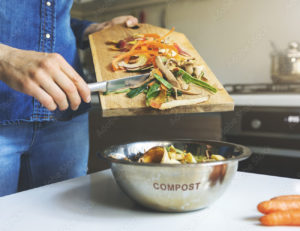Thanksgiving is a time of joy and celebration all across the US. Families come together, often from disparate parts of the country, to share a meal and give thanks for everything they are blessed with. But this happy and joyful experience can often become an excuse to overindulge, producing a huge amount of excess food and materials that are simply thrown in the trash.
Consider one of the most shocking Thanksgiving food waste statistics from the National Resources Defense Council (NRDC) that 200 million pounds of turkey meat alone is tossed out each year around this time of year. That’s 25.6 billion grams of protein or enough calories to meet half a billion adults’ daily food intake
However, it’s not just the meat itself that ends up in the trash, it’s also all the water, food, and energy that has gone into growing that turkey meat that gets thrown away. In fact, according to the NRDC, it’s equivalent to every household in America running a faucet for six hours straight. And that’s before we’ve even got to all the other vegetables, sides, desserts, drinks, decorations, and more that are left untouched, unused, or simply dispensed with once the day is over.
So, the big question is: how do we celebrate Thanksgiving without producing a huge amount of unnecessary waste? The good news is that it can be done. You can have just as good a time, and feel just as sated and full as usual, without overdoing it or sending vast amounts of unnecessary food waste from Thanksgiving to landfill. Below you can find some top tips on how to reduce waste during the holidays.
Plan and reduce
Of course, the best way to reduce the amount of waste is to use less of any resource. This applies to everything at Thanksgiving, including decorations, gifts, food, and drink. In order to reduce the amount of resources you buy, the US Department of Agriculture advises that you plan your meal in advance, thinking about the numbers of people they will be attending, how much food they will reasonably consume, and how you can process any leftovers before it expires. Considering how much turkey is wasted at thanksgiving, this seems like an excellent piece of advice.
When buying your turkey you should allow around one pound of raw turkey per person. Once cooked and a lot of the moisture is gone, this will equate to around five to six ounces of cooked meat per person. If you plan on using leftovers then you can increase this amount. But don’t go overboard and buy a turkey big enough for 12 when there are only 6 around the table. Or you could even consider a vegetarian alternative such as a nut roast.
Buy amounts of other foods with a similar plan in mind. Just under three ounces per person of each vegetable, which is just enough to make it count as one of your five a day will suffice. With between three to five different vegetables for each diner. Of course, you should take into account that some veg may need to be peeled and will reduce slightly in weight once cooked. If you need help working out how much to buy, the NRDC has created this ‘guestimator’ to help you figure out how much you need.
Don’t give in to temptation
It can be easy when you’re walking the aisles doing your Thanksgiving shop to go overboard and buy way more than you need, or to fill your cart with gifts, decorations, holiday treats, and more. But the reality is that you almost certainly don’t need it all. Stay strong and stick to your plan, no matter how tempting the holiday goodies look. Remember that the grocery stores are trying to maximize profits at this time of year with special promotions but ask yourself whether you really need it before you buy it. Just remember how much food is wasted on Thanksgiving each year and only buy what you need. Of course, you can treat yourself and your family but try to stick as closely to your food and waste plan as possible.
Use smart and reuse
Peeling vegetables is time consuming and in most cases unnecessary. Most of the goodness and flavor of any vegetable is in the skin, which is especially true for root veg like carrots and potatoes. And with most peelings ending up in the trash, why not eat it instead? Anything that needs to be peeled, topped or tailed or otherwise trimmed should also be put into the compost rather than the trash.
Any leftovers you do have can be dealt with in a number of ways:
- Ask your guests to bring containers to take some home with them
- Repurpose it into other meals such as stews and soups
- Freeze and then reuse at a later date
- Give it to the pets as a Thanksgiving treat
You can get creative with your leftovers too, waste management at Thanksgiving doesn’t have to be boring. Use your leftovers as ingredients to experiment with new meals. Try a turkey curry, stale bread can be made into an array of desserts or used to make croutons for soup, or use mashed potatoes to make breakfast fritters. There are more Thanksgiving leftover recipes to try here or you could just try something completely new using the leftover ingredients at your disposal.
Recycle, repurpose, and rot
Any decorations you do use should ideally be paper or card, or better yet, reusable so they can be packed away for next year and the year after that. Try to avoid disposable decorations and try to give gifts that are useful, can be eaten or otherwise recycled. The extra waste used by the average American family during the Thanksgiving period adds up to around 25 million tons of garbage. If you really want to reduce holiday waste, then think about the materials you use. If each family used just two feet less ribbon then it would save about 38,000 miles, or enough to tie a bow around the whole world.
Any food waste that you do produce that can’t be eaten can either be used to make stock, composted or processed as food waste at your local food waste program. Through Thanksgiving recycling, we can try and cut down on the 25% extra waste produced each year at this time of year.
Don’t be too hard on yourself
Cutting down on the amount of waste you produce, especially at Thanksgiving and Christmas, is clearly very important. And above we have outlined a number of ways this can be achieved. But don’t be too hard on yourself. Remember that this is a time of joy and celebration and with just a few changes it is possible to have fun, spoil yourself a little, and still make a major impact on the amount of waste you produce.
You don’t have to do without decorations or gifts, just try and think more about the materials you are using, how they might be reused or recycled, and whether you could do with cutting down, even if it’s just by a little bit. It’s not about doing without, it’s about doing things smarter. For more information on waste reduction and other waste related topics, explore the RTS blog today, and of course, happy holidays.
To find out more about waste management and appliance recycling for your business, get in touch with our team of TRUE advisors. To learn more about responsible waste management, recycling processes, and more, subscribe to the RTS blog.





